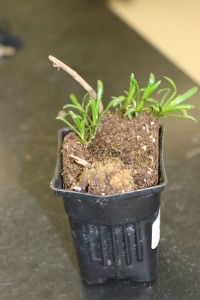Crown gall – Agrobacterium tumefaciens
Pathogen: Agrobacterium tumefaciens
Hosts Include: Achillea, Anemone, Artemisia, Aster, Campanula, Coreopsis, Delphinium, Dianthus, Gaillardia, Geranium, Gypsophilia, Helianthus, Heuchera, Lathyrus, Nepeta, Oenothera, Penstemon, Phlox, Platycodon, Primula, Rudbeckia, Salvia, Scabiosa, Sedum, and Stachys.
Symptoms: Galls form on stems and roots, restricting shoot or root growth.
Spread: This bacterium persists in soil; use of infested field soil can spread the disease. Movement of infested plants also spreads disease. Cuttings taken from infected plants are likely to become infected.
Management: Plants with galls should be removed and destroyed; they can not be successfully treated.
Infection usually occurs through wounds. Good sanitation is important during vegetative propagation. Effective biological control products are available and can be used to protect especially susceptible plants.




 Print
Print Email
Email